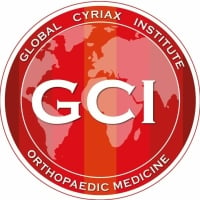
Cross friction massage, easy to screw up
Cross friction massage : 3 main effects
- Traumatic hyperaemia, which helps to evacuate pain triggering metabolites
- Movement of the affected structure, which prevents or destroys adhesions and helps to optimize the quality of the scar tissue (tensile strength)
- Stimulation of mechanoreceptors, which produces a quantity of afferent impulses that stimulate a temporary analgesia, which is usefull when mobilization exercises are incorporated.
Practice makes perfect...click here to discover all about the world wide unique Mastermind private training in orhtopaedic medicine Cyriax.
Indications
- Muscular lesions (muscle belly or musculotendinous junction),
- tendinous (most tenoperiosteal) and
- ligamentous lesions.
Purpose : in the inflammation, repair as well as the remodelling phase it is the purpose to create a better alignment of fibres and tensile strength as well as to maintain normal connective tissue mobility.
Contraindications
- Calcification
- Rheumatoid tendinous lesions
- Local sepsis
- local skin diseases
- use of anticoagulants
 Transverse friction massage infraspinatus tenoperiosteal
Transverse friction massage infraspinatus tenoperiosteal
How to perform cross friction massage : practical aspects
- Exact localization
It is important that transverse friction massage is given at the precise site of the lesion, since after all, we need to be on the correct spot in order to influence the scar formation. To determine that localization, a reliable functional examination is imperative.
- No movement between finger and skin
We need to friction the specific structure and not the overlying skin. Do not glide over the skin, otherwise you might damage the skin, making transverse friction massage impossible for the next session(s).
If the patient used a creamy body lotion then cleansing the skin with alcohol or using a thin layer of cotton-wool between the finger and skin are a usefull solution.
- Transverse
Deep cross friction massage is given transverse to the fiber orientation, in order to mobilize the fibres in a most optimal way.
- Sufficient amplitude
Make sure we make a big movement and move over-up-and again over the structure in order to have a most optimal contact on the structure. Therefore, before starting to friction, it is necessary to take a reserve of skin : first we move the skin superficially in the opposite direction and then we apply pressure and perform the active phase of the deep friction.
- Sufficient depth
How deep must the transverse friction massage be ? Sufficient to reach the structure ; so, it depends on the localization of the specific structure.
- Starting position
Make sure the transverse deep friction massage is comfortable for you as well as for the patient. Position the patient in a way where you can easily reach the structure you want to friction. Make sure your position is also comfortable.
Tendons with a tendon sheath are generally frictioned in a stretched position, just like ligaments (it gives you a better contact on the structure).
Muscle bellies are always frictioned in a shortened position (easier to move the fibers in relation to each other).
- Various grips are used, according to the nature and the position of the lesion.
- Economy of effort
Concentrate on performing an arm movement instead of a small finger movement since this bigger arm movement is much more comfortable for the patient and for the therapist.
Make sure you make a two-phase movement : active phase with more pressure (movement of the structure) and relaxation phase, without pressure. If you would use two active phases, with constant pressure it is quite more painfull and tiring.
For most of the techniques, try to keep your own finger joints slightly flexed during the transverse friction massage (if you friction too much with your interphalangeal joints in hyperextension, you might provoke a traumatic arthritis in those joints).
- Frequency
For most lesions, 3 times/week is a sufficient frequency : usually 15' of transverse friction massage per session ; we start the first session with 10'. In some chronic lesions the duration of treatment will reach 20', 1-2 times/week. If more than one spot has to be treated (e.g. achilles tendinosis), it will be 10' per localization.
There are two exceptions in which a different strategy is used : an acute lesion of the medial collateral ligament of the knee and the lateral ankle ligaments. In those cases the deep transverse friction is given in a progressive way. The details are discussed in the appropriate course modules.
If the structure is too tender on palpation, the interval between the sessions is prolonged ; the duration and the intensity of the deep friction do not change.
The treatment can be ended when the patient is symptomfree and the functional examination has become negative ; remaining local tenderness on palpation can be ignored.
“Movement” is only cross friction massage ?
Soft tissue lesions benefit from movement ; we determined the specific localization of the lesion and incorporate movement on that spot, but…this is not enough : once we reached the end of the repair phase it is imperative that we also incorporate longitudinal stress and other loading exercises in order to optimize the quality of the scar tissue.
